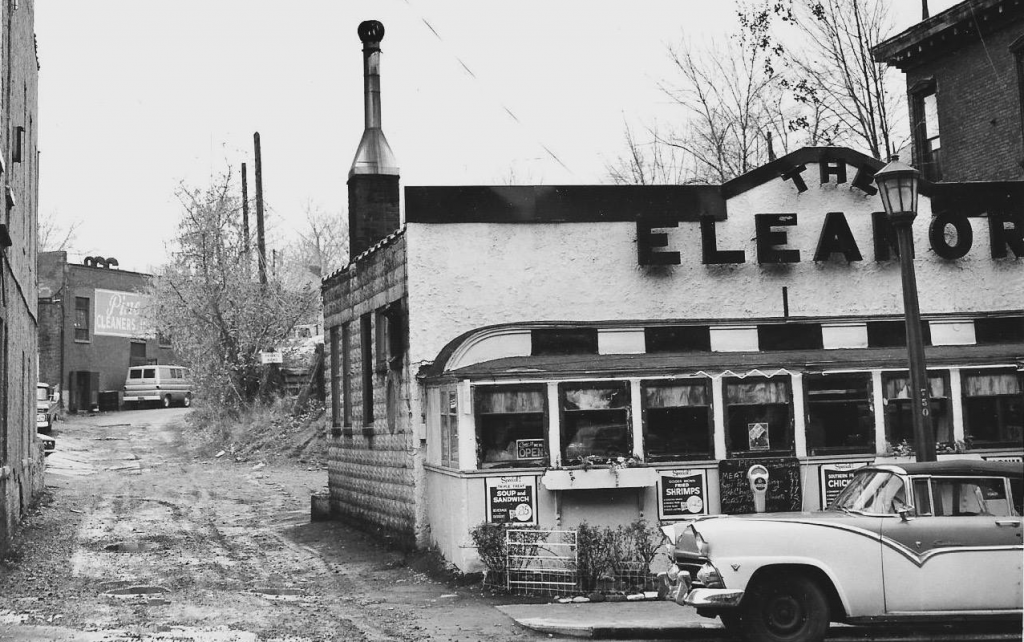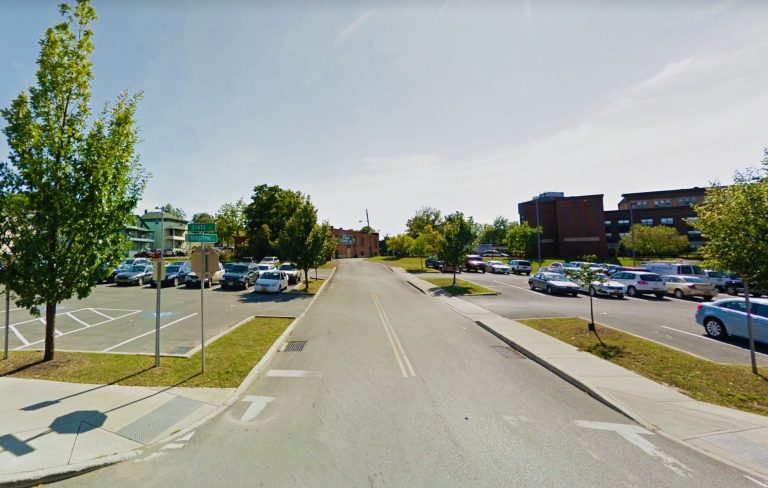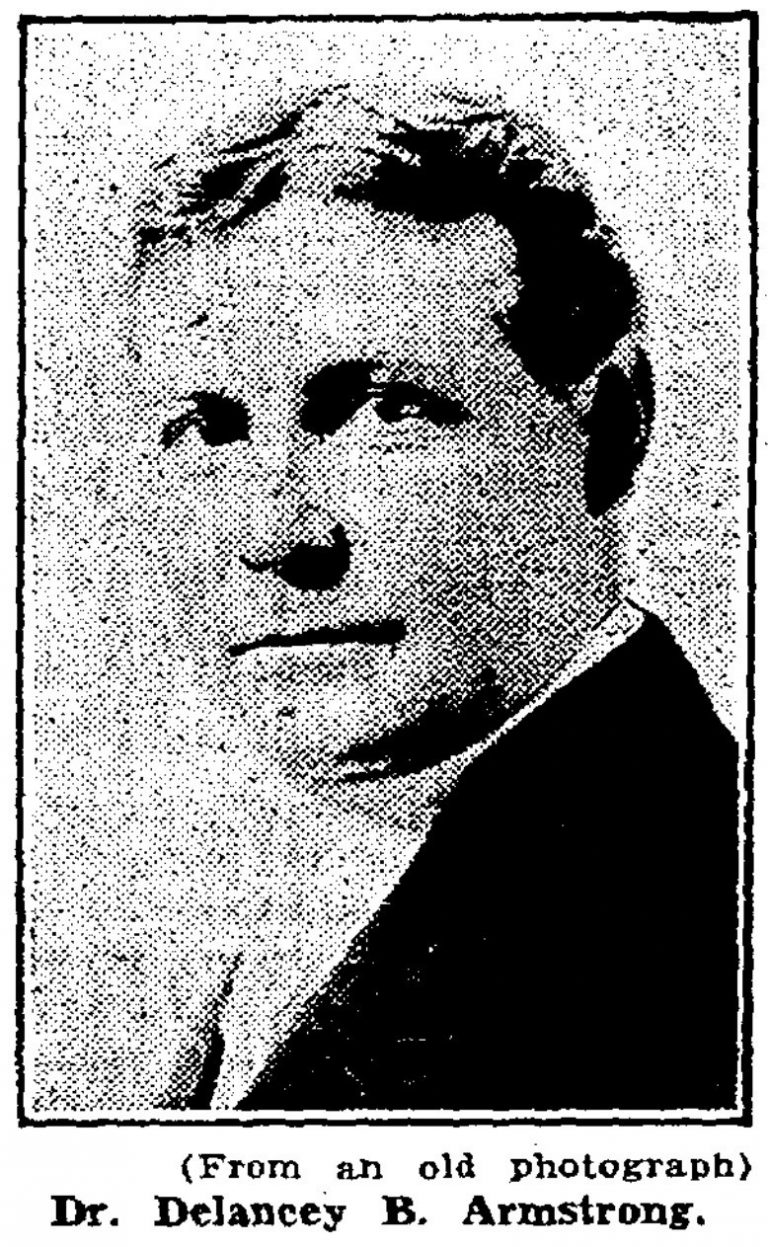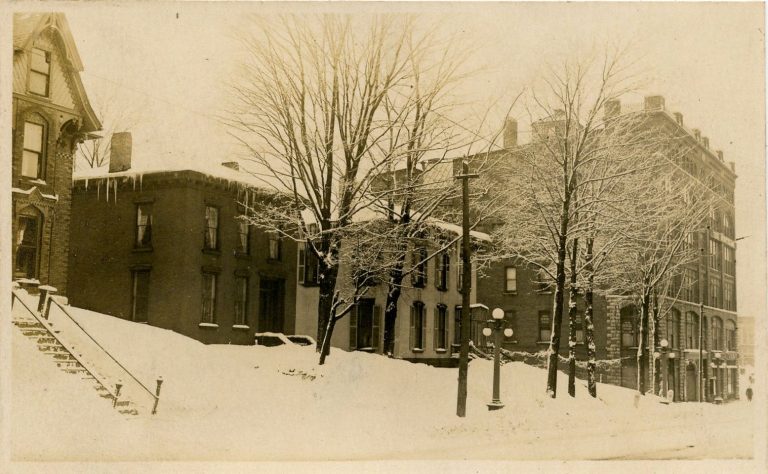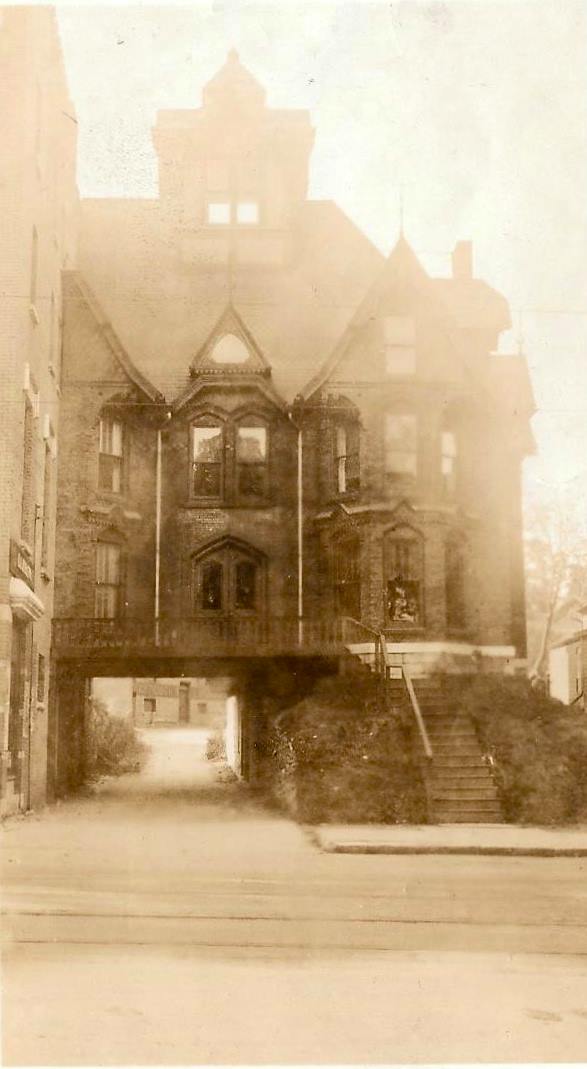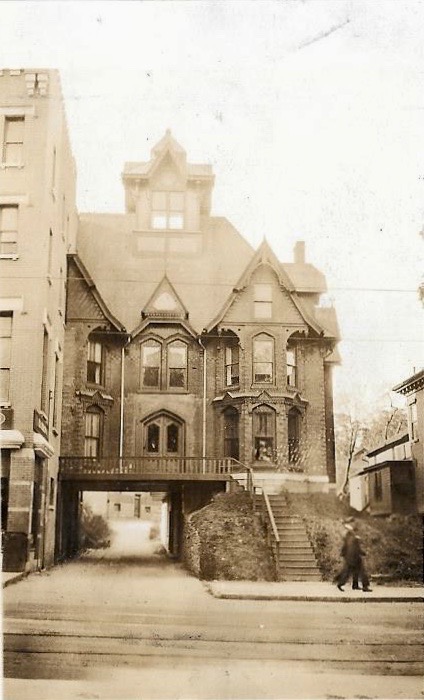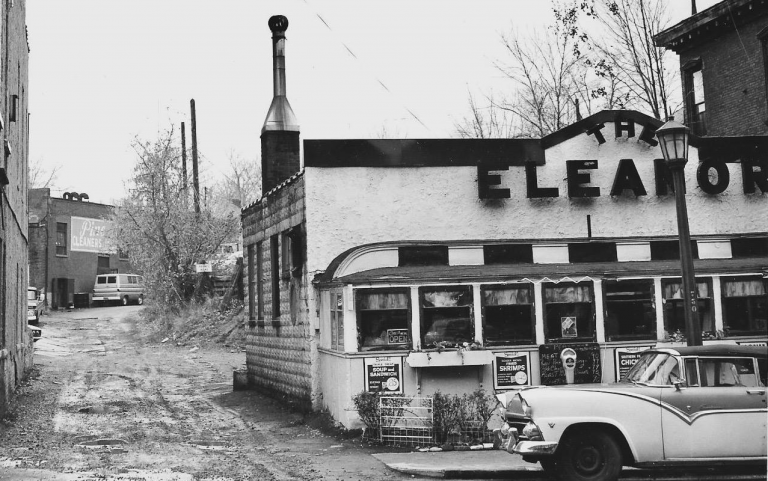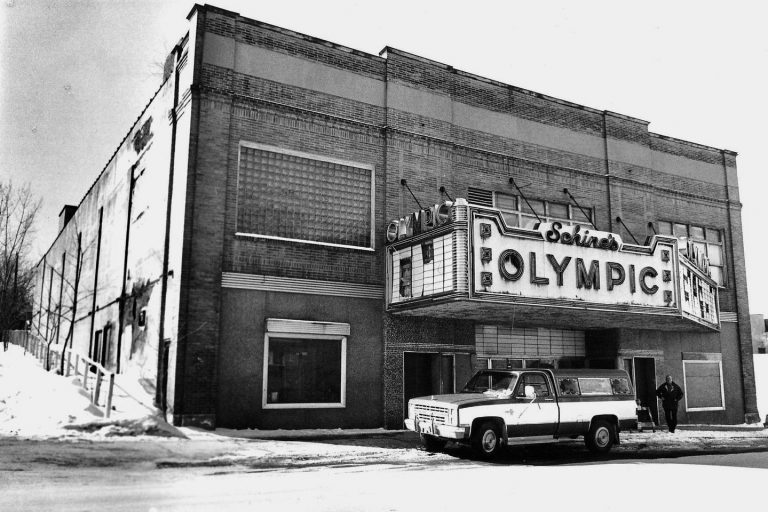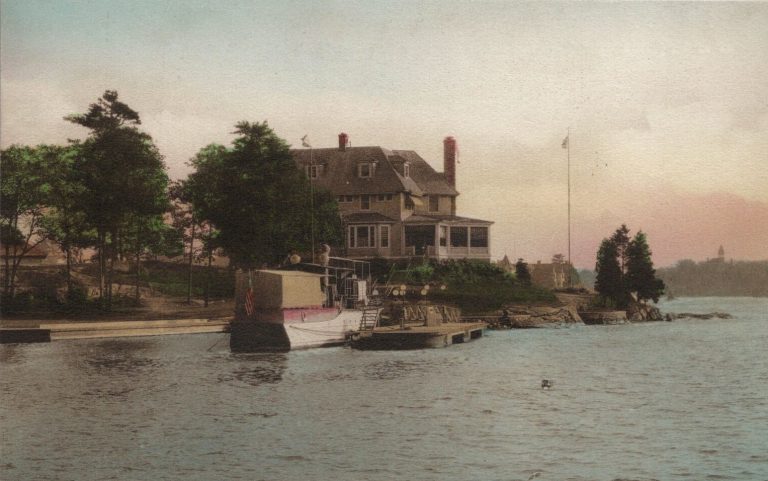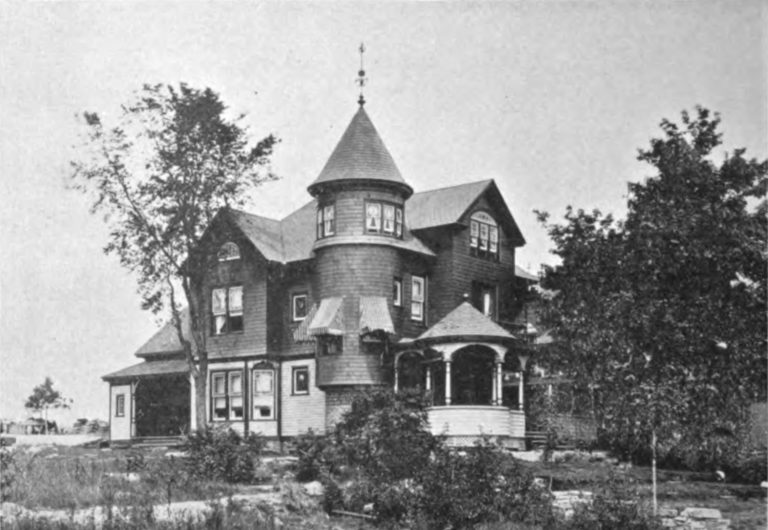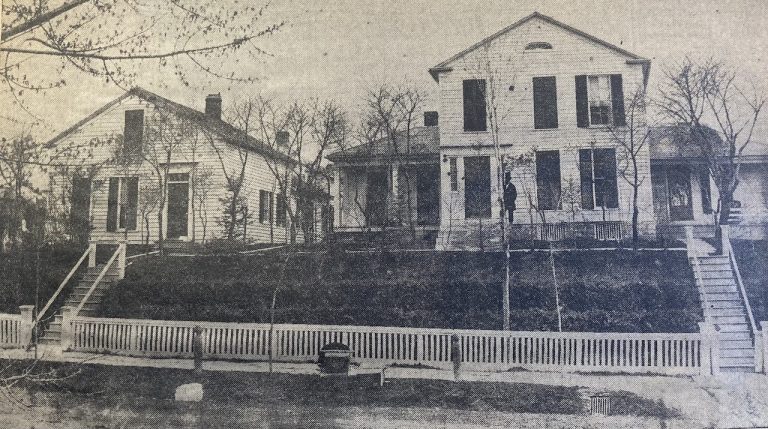The Strange Story Of Solomon’s Temple On Lower State Street
Built in 1879 by Solomon A. Hadcock, a local businessman and industrialist, what would become known as “Solomon’s Temple” stood as a landmark on lower State Street for many years until its razing in 1926. Unfortunately, Solomon barely lived to see his towering mansion completed, having passed away in 1880 at the age of 69. Solomon’s Temple would stand unblemished for a number of years until 1916, lasting approximately another ten years after further cruelty, for lack of a better word, was inflicted upon it.
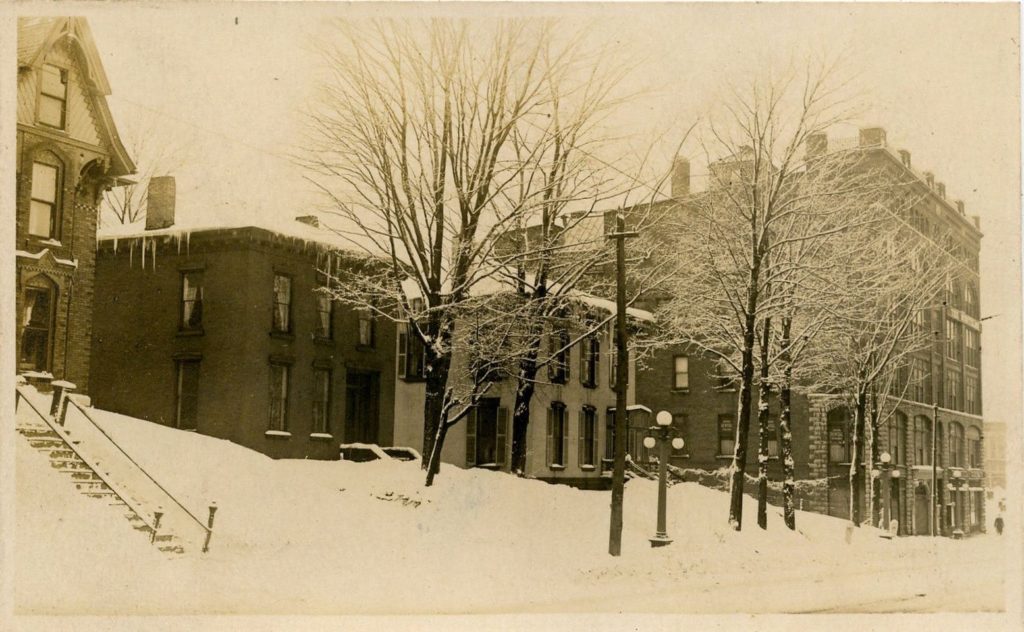
One of Solomon’s businesses which he is perhaps best known for, was as an axe-maker. His factory in the 1840s was located in the basement of the Winslow Pattridge Woolen Mill on Beebee’s Island. The structure and its other businesses, including a Blind Shop of Philo Johnson and a Wagon Shop, were all destroyed by one of Watertown’s first major fires in the spring of 1848. Two men died in the blaze, which also destroyed the bridge crossing to that point.
A year later, Watertown would suffer its worst blaze on record, “The great fire of Watertown,” on May 13, 1849, razing 100 buildings along Court, Arsenal, and Jackman Streets, including 30 stores, two newspaper offices, a post office, three banks a church and two hotels. Miraculously, no lives were lost in the early morning fire, which lit up the 2 am sky for miles and miles.
After Solomon A. Hadcock’s death in 1880, his widow, Sarah, continued to live at the then-addressed 10 State Street mansion until her death in December of 1905 at the age of 86. Two years later, Solomon’s Temple became the property of Dr. Delancey B. Armstrong. Although a proposition was brought before Odd Fellows Lodge to purchase the property in 1908, it never went through.
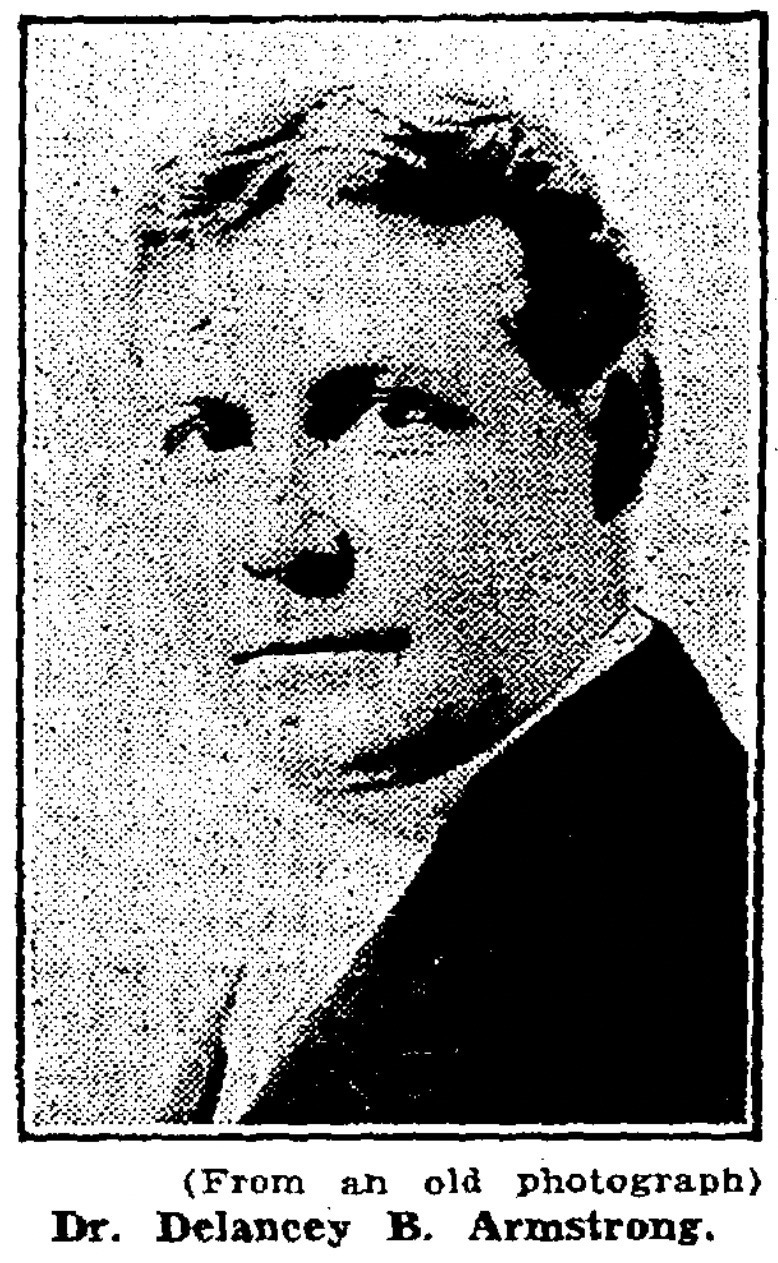
Among many involvements in civic duties, Dr. Armstrong was the committee chairman overseeing the city’s first municipal swimming pools. The two pools, located on St. Mary Street and Grand Avenue, were a gift by J. B. Taylor, who had previously opened up the swimming pool to the public at his Sterling Mansion residence.
The Salvation Army Citadel Construction
In October of 1912, work on the new Salvation Army Citadel next to Solomon’s Temple would commence, “next to” being used loosely as the Watertown Daily Times wrote—
Work on the new home of the Salvation Army on State Street is progressing rapidly and the wall will be started within a short time. A force of men is at work on the job and they have nearly finished excavating. The new building will be 82 by 75 feet and will cut into the old Solomon’s Temple in State Street, which has been a landmark for a long time. Already nine feet of the temple have been removed and more will be taken as the Salvation Army people have an eight-foot right of way through the lot now occupied by the building.
Work on the Citadel was temporarily halted the following month due to an injunction order placed by its neighbor to the west who claimed the Salvation Army buildings wall on his side was not only being built on his property but, when fully finished, would slice off his eastern eaves. No further information was found regarding how it played out other than the Citadel was ultimately constructed as planned.
Click on the video above to pause.
Building Armstrong Place
In 1912, Dr. Armstrong entered into an agreement with developer Paul Hudson to develop land between Franklin and State Streets. Along with selling a portion of Solomon’s Temple land to the Salvation Army, Dr. Armstrong also sold a property at its rear to the Kirk-Maher Company of Malone for an Ice Cream plant. Work would soon begin building the street connecting Franklin St. to State St., known as “Armstrong’s Place.”
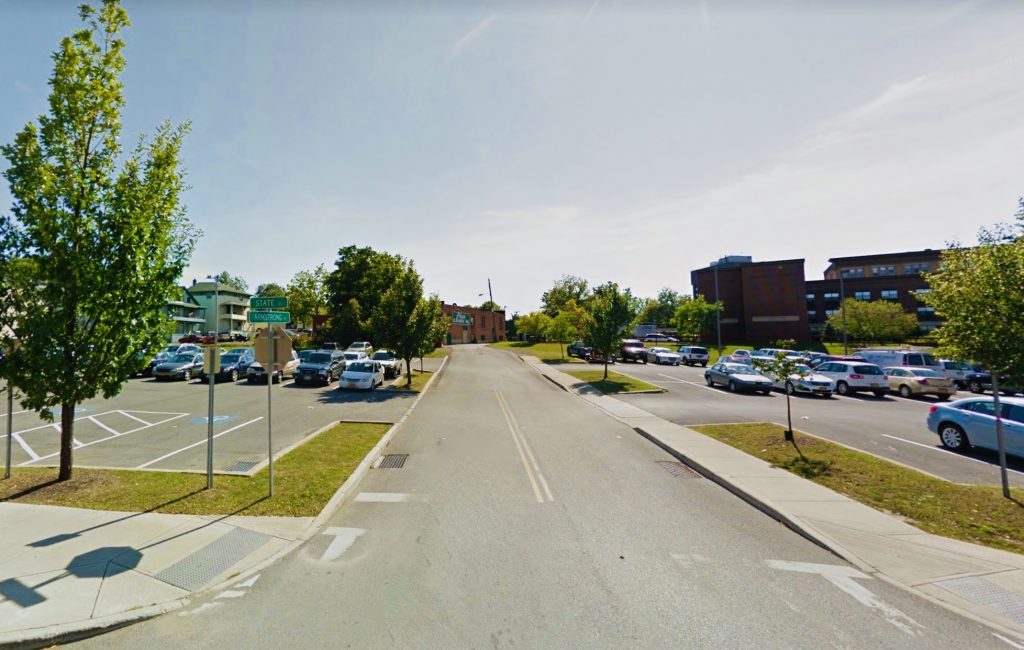
The Watertown Daily Times on May 3, 1912 reported–
Work started today in Armstrong Place, the new street between State and Franklin Streets, which is being built by Dr. Delancey B. Armstrong and Paul B. Hudson, a real estate dealer in this city. A force of five men is at work on the job and the water piping for a new laundry, which will be one of the new buildings on the new street, is being laid.
The street will be 16 feet wide and will have two four-feet sidewalks. It will run at right angles to Franklin street until it reaches the laundry and then will turn slightly to the left and meet State street at a right angle. This road will go through the center of the lot where Solomon’s Temple is now located. On one side of the State Street will be the new building of the Salvation Army and on the other side will be room for a store. Back of the two new buildings facing on the street will be the new garage which Dr. Armstrong has for some time contemplated building.
The work initially agreed upon by Dr. Armstrong to raze Solomon’s Temple and complete his end of opening up an entrance to State Street wasn’t completed despite both the Salvation Army and Kirk-Maher making their deals contingent on it happening. Five years later, just a few months after the neighboring Olympic Theater would open in 1917, Hudson would threaten to have the home razed within seven days, according to an article in The Times–
But seven days remain for Dr. D. B. Armstrong to tear down the house owned by him at 244 State Street and known as “Solomon’s Temple,” run a street through where the house now stands, construct a concrete pavement 16 feet wide with concrete sidewalks to a width of three feet on each side, according to a contract made by him with Paul B. Hudson five years ago.
At the time Mr. Hudson bought a portion of the property on Franklin Street side, it being understood that he should open up his end of the new street, provide for the paving and sidewalks at that time, which he did. Mr. Hudson now owns the Franklin Street half of the stretch, which goes through from State Street and upon his half is the building and garage now occupied by Kellock’s Laundry.
The proposed street will come out close to the Salvation Army building and necessitate the razing of the so-called “temple.” It was said that as long as the street was not put through Mr. Hudson was losing the sale of the property at his end of the tract.
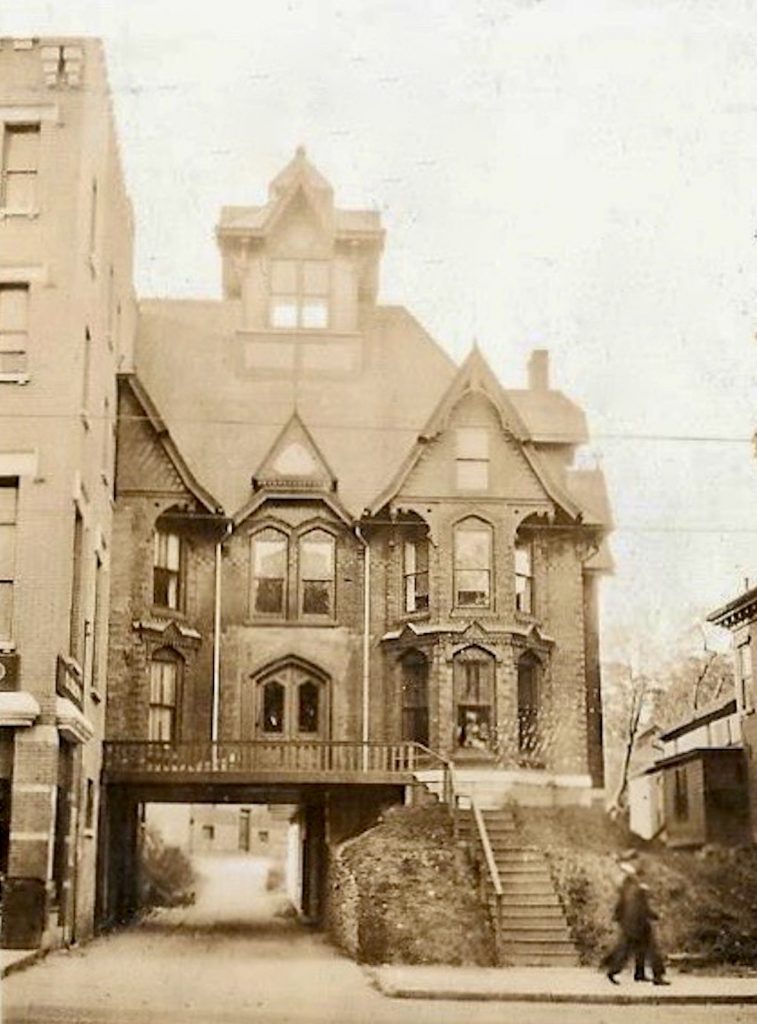
Dr. Armstrong had long since converted the mansion into a boarding house for 30 persons with 23 rooms. At the time, the city was in dire need of space and building Lansingdorp on the north side. Dr. Armstrong said that razing his property, which he estimated to have had five times as much interest in as either of the other projects, would deprive the city of rooming quarters for 30 persons.
On November 1, 1917, Hudson sued Armstrong to open the street and sought $2,000 in damages. The lawsuit included Josephine Gettings, who had a lien on the property.
The following June, Dr. Armstrong was making arrangements to have Solomon’s Temple razed in accordance with the agreement, and occupants were to be given the notice to move out – but then Dr. Delancey B. Armstrong had an idea: excavate the street underneath the temple and into the knoll it sat upon, making it flush with State Street which would have needed to be done.
As it turned out, this was accomplished without disturbing any of the tenants, though ultimately, if the Salvation Army Citadel marked the beginning of the end, this would prove to be the middle act, with the finale not too far away.
Razing A Landmark And The Future Of The Location
Solomon’s Temple would ultimately be torn down sometime around 1926. A realtor, Carl A. Phillips, was the last to own it and took out a demolition permit in July 1925 though he was looking to resell it or repurpose it for business purposes. Around the same time, Mr. Phillips purchased the Antique Theatre on Court and remodeled and renamed it to the Liberty Theater.
The land on which Solomon’s Temple stood was sold in 1926 to A. M. Burdick held it until selling it to Alvin J. Jerge, owner of The Eleanor, in 1951. The Eleanor would open on Court Street in 1925 but move to State Street in 1927 after Solomon’s Temple had been razed.
Today, it’s, unfortunately, a parking lot, as shown in the one photo, for other downtown businesses.
